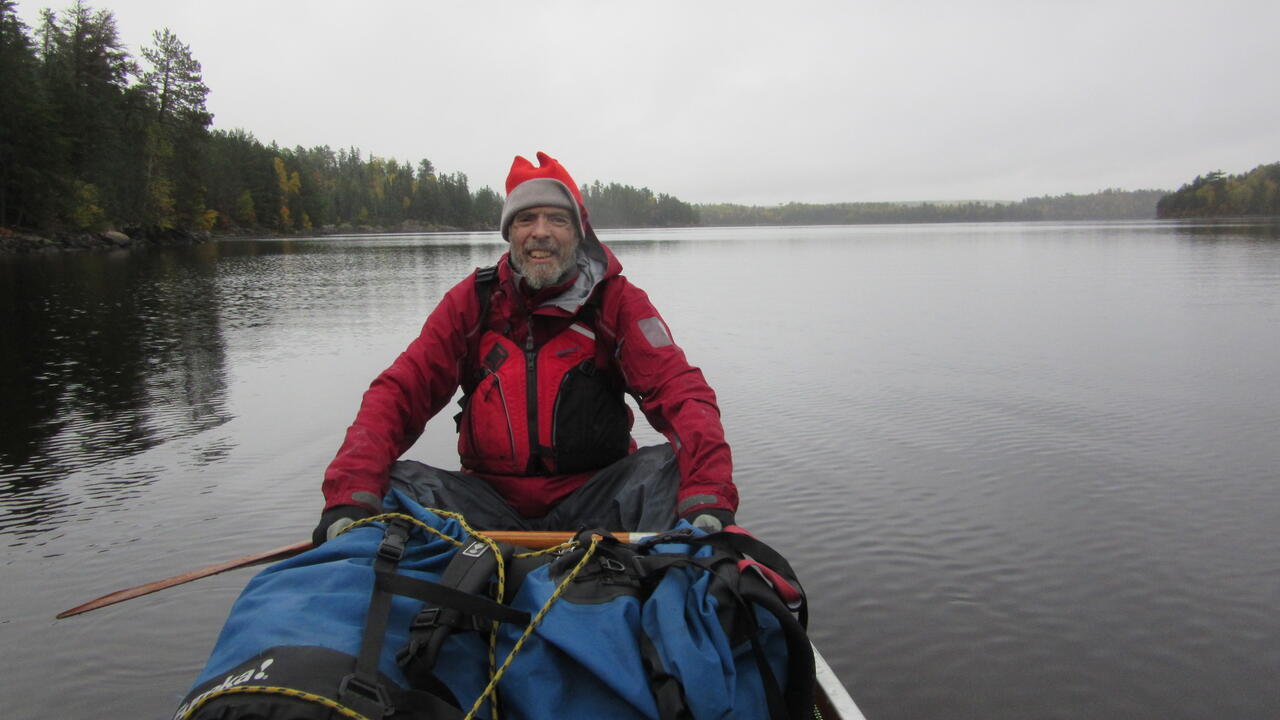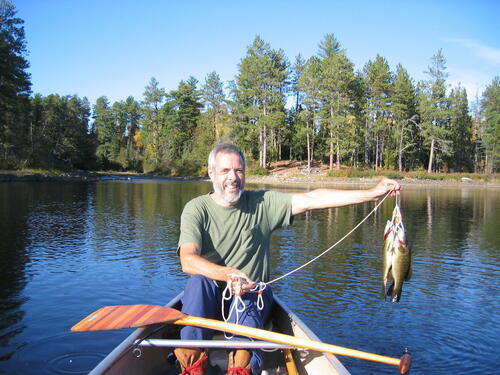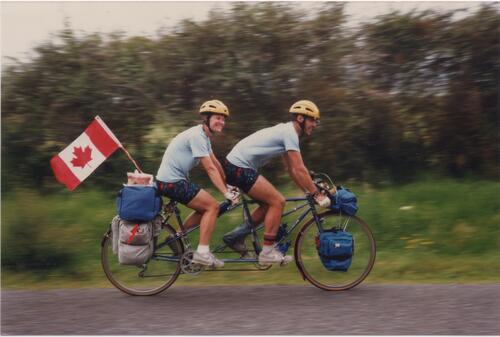
"I left Waterloo with the keys to my life"
Murray Shaw (BSc ’66, PhD ’71) was a passionate student-athlete and biochemistry student. Decades later, he leaned on those interests in his battle with cancer.

Murray Shaw (BSc ’66, PhD ’71) was a passionate student-athlete and biochemistry student. Decades later, he leaned on those interests in his battle with cancer.
By Megan Vander Woude Office of Advancement To call Murray Shaw (BSc ’66, PhD ’71) active would have been an understatement.
To call Murray Shaw (BSc ’66, PhD ’71) active would have been an understatement.
At 57, he was still running, cycling, canoeing and skiing competitively. But after a routine checkup revealed colon cancer, Murray needed immediate surgery.
Post-surgery, he returned to his athletic training, which seemed to become more and more difficult. Concerned, Murray returned for more tests. He was diagnosed with a rare form of non-Hodgkin lymphoma, a cancer that affects the lymphatic system and blood cells.
Murray finds the diagnosis amusingly ironic: “I spent years enthusiastically participating in endurance sports — building up my hemoglobin levels to increase my stamina — and one of the primary symptoms of this disease is reducing hemoglobin.”
But this wasn’t about to stop him. While the illness prevented Murray from competing at the highest level, he was determined to stay active. Twenty years after his lymphoma diagnosis, he credits his continued activity as a driving force for successful treatments and his high quality of life.
“My approach is to stay as fit as I possibly can,” he explains. “No question, it’s enriched my quality of life.”
For example, while Murray underwent preparations for a stem cell transplant, he was still able to enjoy a wilderness canoe-camping trip with his wife Aileen (BMath '69, BA '70), whom he met at Waterloo. His face lights up when he talks about that trip. Even in the worst of times, sport and spending time outdoors, clearly brought some joy.
 Murray holds the fish he caught for dinner on the wilderness canoe-camping trip he took with his wife.
Murray holds the fish he caught for dinner on the wilderness canoe-camping trip he took with his wife.
“I have to give Waterloo credit,” says Murray, “because much of my athleticism stemmed from being on the track and fencing teams.”
His time as a student-athlete was pivotal in developing his athletic ability, and it opened the gateway to the various endurance-based sport Murray fell in love with.
Plus, Waterloo was the place that spawned Murray’s interest in biochemistry, which has helped him better understand his disease, health and the effect of regular activity. Murray’s doctorate supervisor, Thammaiah Viswanatha, is remembered as a dedicated researcher and teacher of biochemistry, as well as a second father. His influence on Murray’s life is unquestionable.
“I’m still a regular donor to the Thammaiah Viswanatha Memorial Scholarship Fund,” he says. “My wife and I have a foundation that gives to the fund every year. Between my time with Thammaiah Viswanatha and my involvement in athletics, I left Waterloo with the keys to my life.”
 Murray and Aileen ride a tandem bicycle during a six-week tour of New Zealand.
Murray and Aileen ride a tandem bicycle during a six-week tour of New Zealand.
In early 2020, Murray shared his own cancer and fitness journey with a local, Ottawa-based lymphoma support group: “They were asking if people had something useful to share with the group, and fitness came up as a topic, so I put my hand up. They asked for a presentation.”
Murray pulled from his knowledge of biochemistry, his experience in competitive sport and new research he conducted for the project. He found Waterloo’s WELL-FIT program particularly inspiring and used it as a basis for parts of his presentation. After he presented to his local group, Murray sent it to a few people who he thought might find it interesting or helpful.
"I want people to realize that consistent fitness effort is possible and essential, no matter what your disease."
To his surprise, Murray’s presentation made its way to a Harvard medical clinic. Someone from that team reached out and asked Murray if he might post a recording of it on YouTube. He did, and today the video has garnered about 2,000 views, more than half of which came from outside North America.
“The presentation was originally meant for people with non-Hodgkin lymphoma like me, but I realize that the information is more generally useful too,” explains Murray. “It’s really targeted to anyone who might not think of fitness as something they’re able to do. That’s why I included a slide that talks about gardening as an option — there are a bunch of things you can do. I want people to realize that consistent fitness effort is possible and essential, no matter what your disease.”

Read more
Alumnus talks about his decision to include Waterloo in his will

Read more
In the face of tragic loss, the men’s basketball team found a new purpose. More than 40 years later, that legacy continues to support student-athletes.

Read more
Greg Somerville (BA ’78) used his experience in Warriors Football to build a fulfilling business career. Now, his groundbreaking gift to the football program will help other young men develop skills for success, both on and off the field.
The University of Waterloo acknowledges that much of our work takes place on the traditional territory of the Neutral, Anishinaabeg, and Haudenosaunee peoples. Our main campus is situated on the Haldimand Tract, the land granted to the Six Nations that includes six miles on each side of the Grand River. Our active work toward reconciliation takes place across our campuses through research, learning, teaching, and community building, and is co-ordinated within the Office of Indigenous Relations.